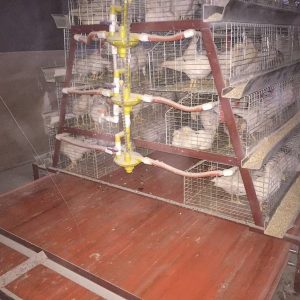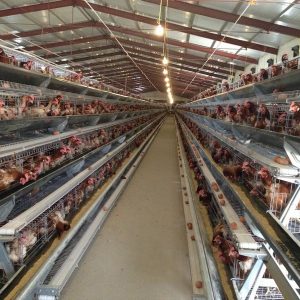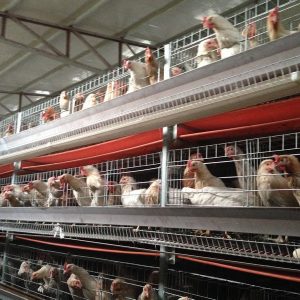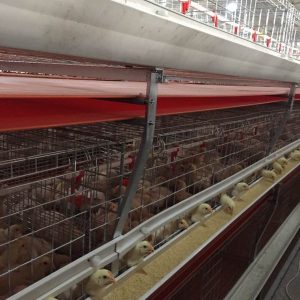
The focus of broiler management in spring and summer
At present, the weather has turned warm and humid. In order to smoothly transition to the season and stabilize broiler production, it is necessary to adjust the focus of broiler feeding and management in time.
1. Strengthen ventilation
1. Purpose: Enhancing ventilation is the main measure to improve the environmental conditions in the house. Xinmu.com reminds you to properly supplement oxygen through gas exchange, remove carbon dioxide, harmful gases, dust, and pathogenic microorganisms in the chicken house, keep the air environment in the house good, with less dust, no irritating ammonia smell, and feel natural and comfortable when entering the chicken house. The chickens move evenly, with good spirits and food intake, and no obvious respiratory diseases.
2. Requirements: On the premise that the temperature reaches the standard, heat preservation and proper ventilation should be the mainstay before 2 weeks of age. The ventilation rate should be increased at 3 weeks of age, and ventilation should be given priority after 4 weeks of age.
3. Method
(1) The ventilation of the chicken house is operated in the order from top to bottom and from inside to outside. Before feeding the chickens in the morning, increase the ventilation of the outer tent and discharge the exhaust gas in the house at night in time.
(2) During the brooding and heat preservation period, the joints of ceiling tapes in the “house in the room” of the brooding room should be separated by certain cracks and cannot be sealed; when the brooding temperature reaches the standard, the ventilation of the outer tent can be appropriately increased to facilitate the room in the house. Exhaust emissions and inflow of fresh air. The ceiling tape should be removed after 30 days of age.
(3) When the temperature outside the house reaches 20°C or above, increase ventilation for broilers over 3 weeks old, and pull the outer tent to half the height, but pay attention to open the windward side smaller and the leeward side larger; open at night Smaller and bigger during the day; when the wind is moderate and comfortable, the outer tent can be fully pulled down to keep the air quality in the house good.
Second, strengthen stocking management
Fully clean and disinfect the sports field before stocking, including cleaning up garbage and stagnant water, spraying disinfectant water and lime powder. Before disinfection, it is best to remove the surface soil and re-spread new soil on the surface.
In non-rainy or non-smoggy weather, all chickens must be stocked up to 30 days old. Xinmu.com reminds you to open the foot window after feeding the chickens at about 9 o’clock in the morning to allow the chickens to move freely. Adequate drinking fountains and buckets should be provided in the playground, pergola, shade of trees, under dense foliage, etc., and insist on feeding water and feeding in the playground every day (standard: more than 3 pig troughs/thousand chickens or more than 6 large buckets/ Thousand chickens, more than 2 large drinking fountains/1,000 chickens) to reduce the stocking density in the house, increase the light of the chicken flock, and improve the quality of broiler products.
At the same time, the chicken farms that have not met the greening standards should be planted in time as required, such as fast core trees and climbing plants, and the melon shed or hay shed should be built. Afforestation requires a shaded area of 50%-70%.
3. Strengthen litter management
Regularly clean and replace the old damp and agglomerated litter to keep the litter in the house dry. It is generally required to replace the brooding chicks after 25 days of age, the middle chicken stage about 10 days, and the large chicken stage about 7 days. It is mainly used for places where the litter is prone to wet around the waterer, and should be cleaned and replaced at any time. Cleaning is not necessary for those that are still dry. The specific cleaning interval depends on the quality of the litter and the ammonia concentration in the house. Xinmu.com reminds you that if the air humidity causes the floor of the chicken house to be too humid, you can sprinkle lime powder on the ground first, and then put new bedding on the ground after it is dry.
When turning the litter on a daily basis, pay attention to it in a well-ventilated weather (after grazing in the morning), open the outer tent, so that the ammonia smell after turning can be discharged in time.
Fourth, speed up the expansion speed
Gradually expand the pens around 7 days of age. The pens need to be expanded gradually. The first and second expansions must be carried out at the same time. It cannot be done in one step. New bedding should be added to the newly expanded area. The flocks vaccinated against coccidiosis should pay attention to the old and new. Use litter mix. After 20 days of age, it will be expanded to more than 2/3 of the chicken coop, and the house will be expanded during the period of 25-35 days. After expanding the stalls, pay attention to the thorough separation of the stalls and keep the stall doors closed all day. In addition, the sports field must also be classified. The method of stalling is the same as in the chicken house.



